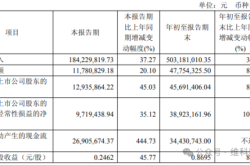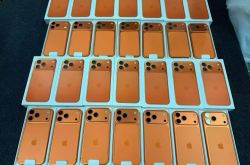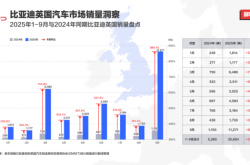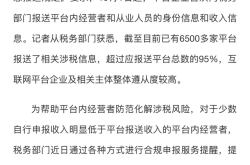Two Chinese Entrepreneurs Stage a Comeback: Mobile Phone Cameras Revolutionize US Military's Century-Old Night Warfare
![]() 03/17 2025
03/17 2025
![]() 568
568
Opportunities and Challenges Coexist
The US Department of Defense is actively seeking technology companies in Silicon Valley.
In February of this year, Deepnight, a Silicon Valley AI startup, announced the completion of a $5.5 million seed round of financing led by Initialized Capital, with participation from Y Combinator (YC).
This news swiftly garnered industry attention as Deepnight, a mere one-year-old company, is the first and only one to leverage AI software for military night vision. Currently, Deepnight has secured contracts worth approximately $4.6 million with the US federal government (including the US Army and Air Force) and companies such as Sionyx and SRI International.
Industry insiders predict that with its innovative AI night vision software, Deepnight is poised to disrupt the traditional night vision equipment market, worth tens of billions of dollars, and establish a significant presence in the military night vision sector.
Moreover, the key members of the company's team have also garnered external attention—two Chinese engineers with backgrounds at Google: Lucas Young and Thomas Li.
Their story is not merely a tale of entrepreneurship by Silicon Valley tech enthusiasts but also a microcosm of Chinese engineers breaking through in the global technology wave.

AI vs. Traditional Optics: A "Dimensionality Reduction Attack" on Performance and Cost
Most traditional night vision devices rely on analog technology to convert weak nighttime light into images through optical lenses and chemical processes. This analog process is prone to issues such as loss of optical information and the "halo" effect under strong light sources.
More importantly, these night vision devices are also prohibitively expensive. In the military night vision industry, giants like L3Harris and BAE Systems have erected formidable barriers through patent protections and military standard certifications, pushing up the price of military night vision equipment. Typically, night vision gear produced by these military contractors costs between $13,000 and $30,000.
Over the years, the US Army has been striving to convert the analog technology of night vision devices to digital technology. A prime example is the $22 billion "Integrated Visual Augmentation System (IVAS)" project.
So, what gives Deepnight the edge over its competitors?
In essence, Deepnight's advantage lies in its ability to utilize an ordinary $50 smartphone camera paired with an AI algorithm to achieve exceptional real-time night vision effects. Behind this achievement are several unique skills possessed by Deepnight.
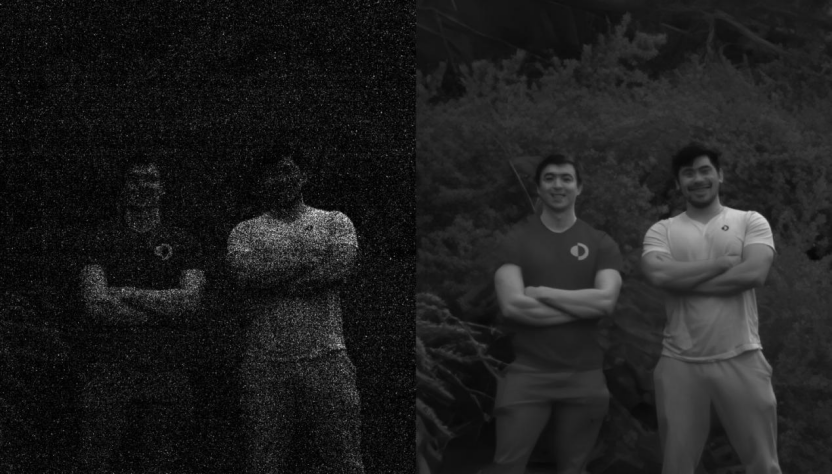
Note: On the left is a photo taken by the founder of Deepnight with an ordinary camera at night, and on the right is a photo captured by the company's AI model.
The first is AI.
Deepnight's AI model employs deep learning of vast low-light scenes to generate high-resolution images under extremely low light conditions, outperforming traditional military night vision equipment like L3Harris.
The second is cost.
Seeing clearly in near-total darkness usually necessitates specialized and costly hardware, such as $3,000 image intensifier tubes, and solutions like thermal imagers and infrared cameras are also expensive and power-intensive.
According to Lucas, they can see everything in the world in the dark, and all of this is achieved using readily available $50 smartphone cameras, without the need for expensive custom hardware.
Furthermore, what Deepnight offers is software that empowers any hardware device equipped with a camera to acquire night vision capabilities. This implies that it can be directly deployed on existing military equipment without additional replacement costs.
However, relying solely on technological and cost advantages does not guarantee securing major military contracts. Deepnight's success is also intricately tied to the perseverance and resilience of its two Chinese founders, Lucas Young and Thomas Li.

The Technical Beliefs and Strategic Perseverance of the Chinese Founding Team
Lucas and Thomas grew up together in New Jersey and have maintained a close connection. Later, their career paths became inextricably linked with visual technology.
Lucas enrolled at the California Institute of Technology to study computational photography and spent five years researching smartphone camera software. For instance, he overcame the small aperture limitation of inexpensive $50 digital cameras through coding. Subsequently, Lucas joined Google to delve into edge computer vision problems.
Thomas chose to pursue AI and computer vision at Carnegie Mellon University and later joined Google to work on machine learning systems.

Note: Thomas (left) and Lucas (right)
Both worked at Google, and this shared work experience not only deepened their technical rapport but also sowed the seeds for entrepreneurship—they realized that the potential of AI in the visual field was far from fully tapped.
In 2018, Lucas came across a paper titled "Learning to See in the Dark," which discussed utilizing AI for low-light imaging. Lucas was enthused and believed it overturned the physical limitations of optics.
However, at that time, AI chips on devices were not sufficiently fast to support the 90 frames per second (fps) required for real-time viewing. If Lucas had abandoned his research on low-light imaging at that juncture, perhaps Deepnight would never have come into being.
In 2024, Lucas realized that AI accelerators running on system-on-chips (SoCs) had advanced enough to support 90 fps. He persuaded Thomas to quit his job, and together they founded a startup named Deepnight, which promptly entered the Y Combinator winter batch.
After joining YC, under the guidance of mentors, the Deepnight team employed some "unconventional" methods to successfully establish contact with the military.
Since Deepnight couldn't directly approach the Pentagon to discuss military cooperation, Lucas identified an industry event attended by personnel from a US Army night vision laboratory. He wrote a white paper outlining his idea in advance:
"Night vision is a software problem."
Lucas distributed numerous copies of the white paper at the event, and one of the recipients was an Army colonel who agreed to read it. He later recalled: "It was just a casual hallway conversation, and I wasn't even dressed in business attire, just a T-shirt."
The Army colonel was impressed by Lucas's idea and connected him with laboratory personnel. To prove the feasibility of his concept to these personnel, Lucas and Thomas developed a night vision smartphone app. They placed a smartphone into a VR device compatible with smartphones and demonstrated the basic prototype. Although it was merely a prototype, it left a lasting impression on the personnel of the US Army Night Vision Laboratory, paving the way for the first collaboration between Deepnight and the US military.
Lucas and Thomas share some characteristics of Chinese entrepreneurs. For instance, they embrace technological pragmatism, avoid heavy investment in hardware, and focus on lightweight algorithms; they maintain the patience and perseverance of Eastern engineers while being well-versed in the rules of the Silicon Valley game.

Looking Ahead: Opportunities and Challenges Coexist
In the future, opportunities and challenges will coexist for Deepnight.
Law enforcement agencies in numerous countries around the world are increasingly utilizing night vision equipment for training activities, and many nations are also significantly increasing their military and defense budgets, which will drive the growth of the night vision equipment market.
According to Mordor Intelligence data, the market size of night vision equipment was $9.66 billion in 2024 and is projected to reach $14.19 billion by 2029, with a compound annual growth rate of 7.98% during the forecast period (2024-2029).
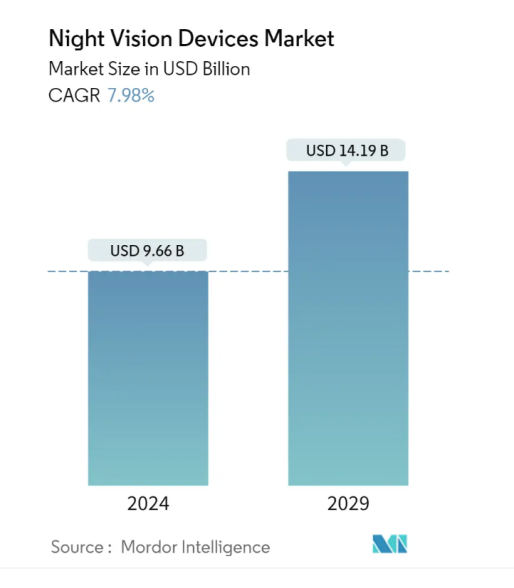
Note: Night vision equipment market size
For Deepnight, AI software can provide high-resolution images under low-light conditions. This technology is not only applicable to the military field but also holds the potential to transform multiple industries such as security, agriculture, and environmental research. Moreover, Deepnight's software solutions are compatible with various hardware devices, including smartphones, goggles, drones, etc., offering broad application prospects for their products.
It can be said that Deepnight not only brings new possibilities to night vision technology but also provides fresh ideas for the application of AI in traditional hardware fields. This has also attracted numerous investors. In addition to Initialized Capital, which led the round, Deepnight's funding list also includes angel investors such as Kulveer Taggar, former In-Q-Tel partner Brian Shin, and Muse band lead singer Matthew Bellamy.
Of course, Deepnight also faces certain challenges.
When subjected to extreme environments (like sand and dust, electromagnetic interference) in military scenarios, the performance and adaptability of Deepnight's AI software still need to be validated. Additionally, the competition in the night vision equipment market is fierce, and it remains to be seen whether it can compete effectively against industry giants in the future.
The story of Deepnight is essentially the resonance of two waves of the times.
On one hand, AI is transitioning from "data fitting" to "physical reconstruction," beginninning to address physical problems in the hardware domain, and Deepnight is riding this wave.
On the other hand, Chinese entrepreneurs are frequently emerging in this AI boom. According to IT Orange data statistics, as of the end of last year, there were a total of 70 artificial intelligence companies founded by former Google employees who are Chinese.
At the intersection of these two waves of the times, how big of an impact Deepnight can make remains to be tested by time.
Reference: YC grad Deepnight nabs $5.5M for AI night vision software that disrupts a multi-billion-dollar industry (TechCrunch)
Night Vision Equipment Market Size and Share Analysis - Growth Trends and Forecasts (2024 - 2029) (Mordor Intelligence)

